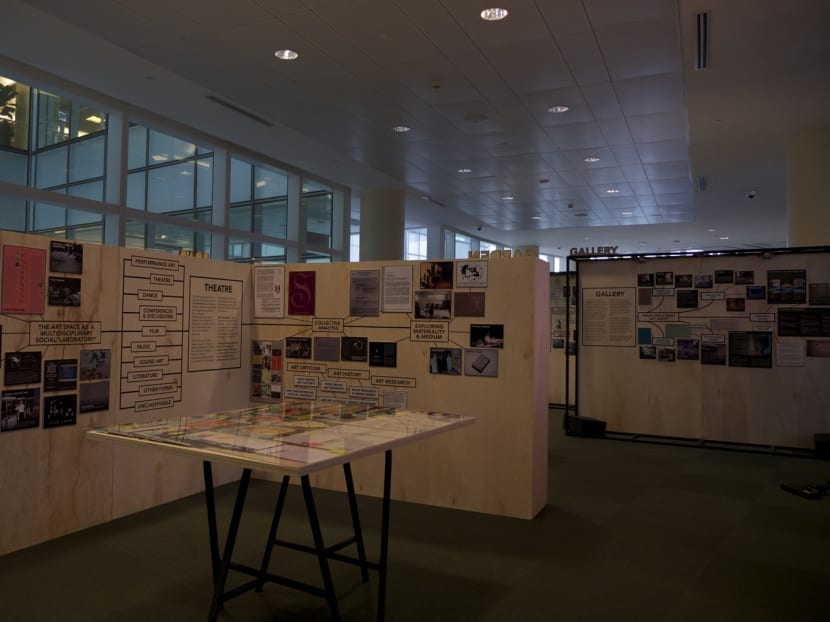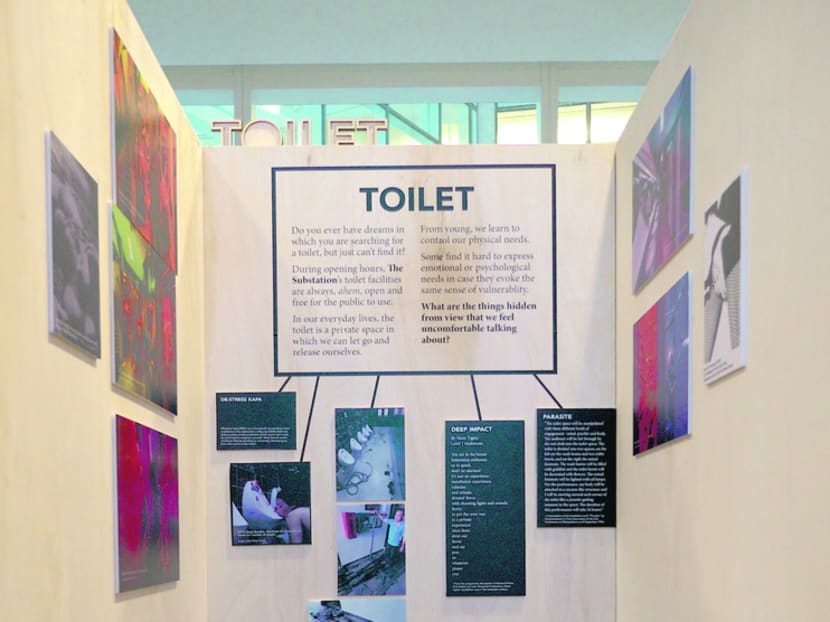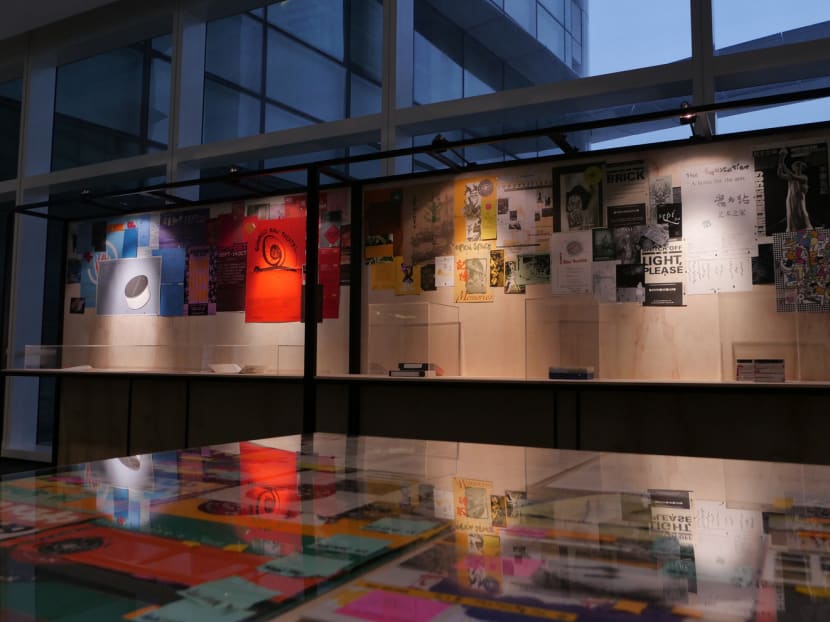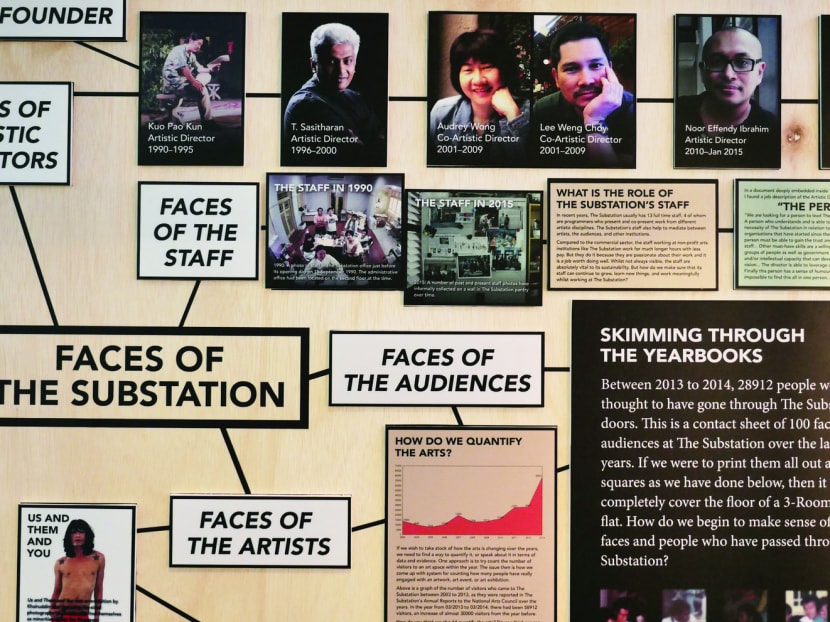How The Substation’s toilets became art spaces
SINGAPORE — An ongoing exhibition that looks at the past 25 years of The Substation is currently up at the National Library. Titled Making Space, visitors can get a glimpse of events that have taken place in the different spaces in and around the seminal arts centre — and that includes its toilets.




SINGAPORE — An ongoing exhibition that looks at the past 25 years of The Substation is currently up at the National Library. Titled Making Space, visitors can get a glimpse of events that have taken place in the different spaces in and around the seminal arts centre — and that includes its toilets.
In a place that is known for unusual arts events and performances, it is probably not surprising to learn that artists have used the loo for things other than, well, your number one and two.
A small section of the exhibition offers a nod to this by citing a few examples. Back in 1996, for instance, artist S Chandrasekaran did a 24-hour performance art piece called Parasite where he essentially took on the role of a parasite. In 2003, sound artist Zulkifle Mahmod set up a sound installation inside this most relaxing of spaces, cheekily named DE-stress kapa.
More recently, design collective Neon Tights had given both toilets a visual makeover, while you can still see remnants of a performance by Marla Bendini on the men’s urinals — her red lipstick marks are still visible. (And back in 1995, the toilet itself was part of an artwork: As the cover image for compilation album Flush After Use, which featured Singapore bands such as the rather aptly named Flow.)
It was a pleasant and amusing discovery for Debbie Ding, the artist responsible for setting up the show, with help from former Substation co-artistic director Audrey Wong.
“Until I did the research, I didn’t know that The Substation held events in its toilets — although I once attended a noise gig and poetry recital in a rather small toilet in Golden Shoe, so it seemed completely logical that artists would have also utilised The Substation’s toilets in the past,” she said, before quipping: “What’s more weird is that there isn’t much or any graffiti in the toilets ...”
One of the events under The Substation’s special 25th anniversary edition of its Septfest festival, Making Space features documents, artefacts and photographs that Ding had sifted through in the course of preparing the show. Among these are old tickets, posters and flyers, slides, and cassette and VHS tapes. Also tied in to the show is the recent launch of a new book, as well as a conference on Saturday.
Making Space also includes a reading and video corner, featuring interviews with 25 people on their thoughts on the arts centre, and an interactive work by multimedia artist Ong Kian Peng called the Substation Archival Retrieval Unit, where visitors are issued “receipts” of past Substation events with the press of a button.
The main bulk of the show, however, is presented as a kind of associative mind-map, divided into the different “spaces” within the arts centre, such as the theatre, gallery, dance rehearsal space and classrooms, and the iconic garden. The last, said Ding, is something that inevitably springs up even if it is not around anymore.
“It’s something you can’t disassociate from The Substation. And if you talk to the older people, they would talk about it a lot. It’s almost a utopian space.”
But there are other spaces the exhibition looks at: There’s one called The Wall section that looks at both metaphorical and literal ones (where many murals have popped up) and one called the Road, which looks at the roads around the Substation, including Armenian Street and the driveway between the Substation and the Peranakan Museum. There is also a section on “imagined” spaces, citing, for instance some of the works that were never shown for one reason or another, such as the play Smegma, which was banned hours before it was scheduled to be staged in 2006.
A number of interesting nuggets of information pop up, such as The Substation having its own song called The Dream Has Begun. It was written by the late Ken Low and Edison Lauw in 1991 — but there is no record of what it sounds like.
Ding also discovered a tongue-in-cheek job description for its artistic director in a document embedded in its web server: After a lengthy list of criteria the applicant must meet, the ad ends with a statement about a candidate having “a sense of humour to realise that it is almost impossible to find this all in one person”.
Elsewhere, she also lists the different classes one could have taken at The Substation at different points in time, including odd-sounding ones such as Creative Dancing For Boys and Post-Natal Fitness.
It is not the first time The Substation’s archives have been used by artists. In recent years, Kent Chan had tapped into its film archives for an exhibition while curator-artist Ho Rui An launched his novel Several Islands. And for Ding, who will, incidentally be making history by being the first artist to get married at The Substation Theatre very soon, there has been much delight in discovering new things while digging through the archives. And if there is one thing she has realised from looking through 25 years-worth of history, it is that its ideals from the very beginning, under founder Kuo Pao Kun in September 1990, have remained.
Citing how the early programmes were all about spaces (Dance Space, Open Space, for instance), she said: “It has always been about process more than outcome, about things in progress and working things out.”
Making Space runs until Nov 16, 10am to 9pm, at the National Library Building, Level 7, Promenade. The Substation Conference is on Sept 19, 1pm to 6pm, at the National Library Building, Level 5, Possibility Room. To register, visit http://thesubstationconference.peatix.com. Free admission for both.
For other Septfest events, visit http://www.substation.org/septfest.







